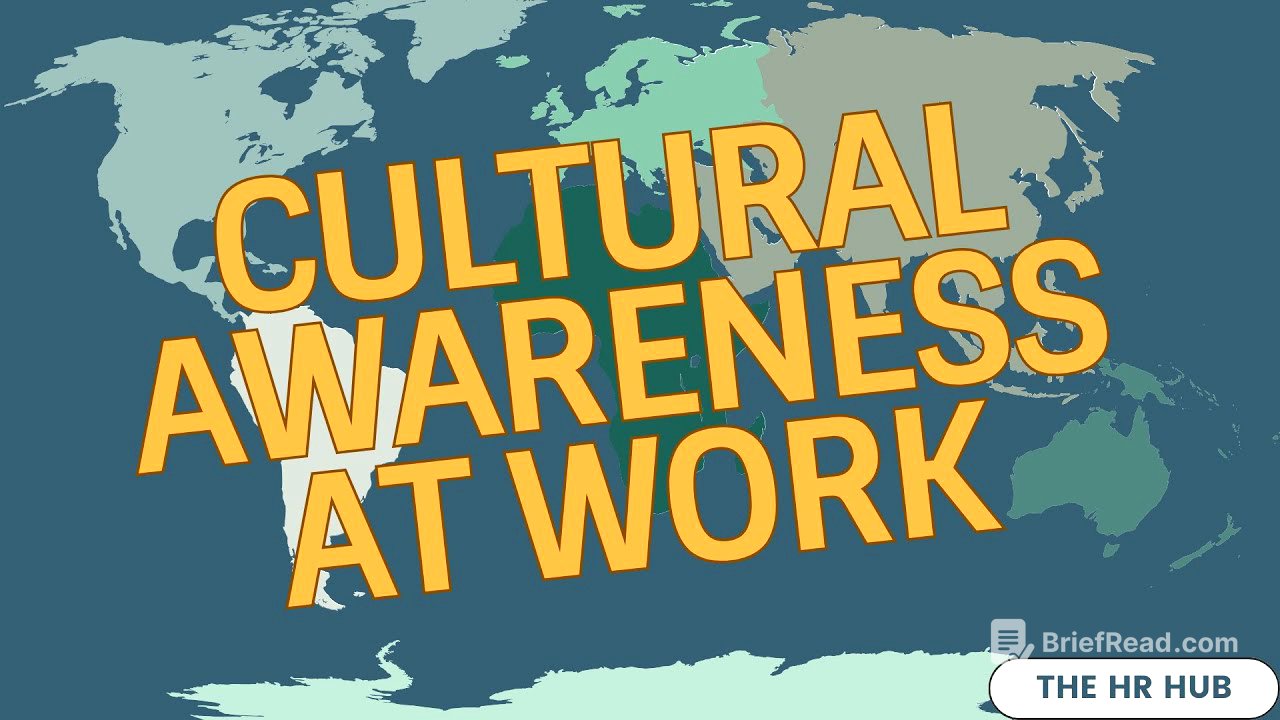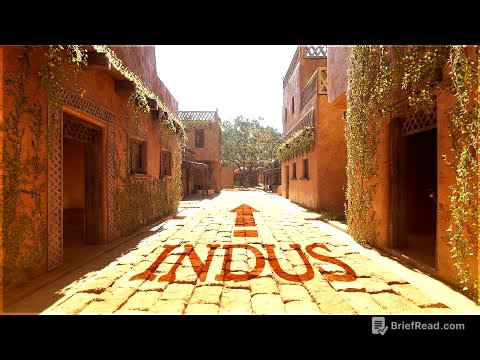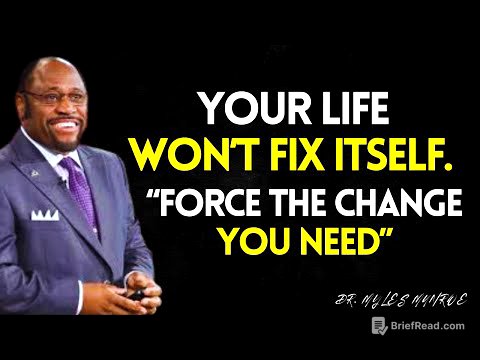TLDR;
This video explores the importance of understanding and including different ethnicities in the workplace. It addresses how cultural differences can impact trust and communication, and provides strategies for organizations to foster inclusivity and avoid stereotypes. Key points include recognizing the subtleties of cultural differences, promoting open communication, and celebrating diversity through various initiatives.
- Acknowledge and address cultural differences in the workplace.
- Build trust by understanding and respecting diverse communication styles.
- Promote inclusivity through open dialogue and celebration of cultural diversity.
Intro [0:00]
The video introduces the topic of ethnicities in the workplace, highlighting the need to better include and manage different cultural backgrounds. It contrasts the common discussions around workplace culture with the less frequent focus on the specific ethnic backgrounds and beliefs that individuals bring from their countries of origin. The discussion aims to provide insights on how to navigate and manage multicultural dynamics in the workplace effectively.
We stopped talking about this [1:19]
The discussion addresses the shift in societal conversations around multiculturalism, noting that while there's increased acceptance and acknowledgment of diverse cultures, genuine understanding and addressing cultural nuances have diminished. This gap can lead to misunderstandings and erode trust within organizations. The importance of recognizing and accommodating cultural differences is emphasized, using an example of a manager with a Mexican background but a Germanic approach to business, illustrating how cultural influences can be complex and multifaceted.
Thousands of cultures [4:59]
The conversation shifts to the practical aspects of incorporating ethnic diversity in the workplace, especially in the context of immigration. It emphasizes that a company's ethnic diversity should reflect its client base to broaden market reach. The speaker suggests consulting employees from different cultures to understand how to engage with various communities effectively. Using the marine insurance industry as an example, the importance of understanding specific cultural norms, such as Greek culture, is highlighted for business success.
Building trust [8:09]
The discussion focuses on building trust and clarity within multicultural teams by addressing hierarchical differences in communication styles. It contrasts the inclusive Norwegian culture, where direct communication with leadership is acceptable, with more hierarchical cultures like Japan, where it is not. The speaker advises finding individuals who have lived in multiple cultures to help bridge these gaps. An anecdote about a Hitachi employee illustrates the importance of understanding indirect communication styles and seeking cultural interpreters to avoid misunderstandings.
Common ground [11:12]
The importance of establishing common ground and clear communication in multicultural workplaces is emphasized. This involves creating a welcoming environment, defining a joint purpose, and ensuring transparency. The speaker shares an experience with a Norwegian company in India, where employee benefits were not valued as much as direct monetary compensation due to the absence of a public health system and state pensions. This highlights the need to avoid assumptions and to ask employees directly about what they value.
Areas of focus [14:31]
The discussion identifies key areas of potential friction in multicultural workforces, including responses to authority, directness of communication, and methods of feedback. The speaker notes that some individuals may agree outwardly while disagreeing internally, and that direct feedback can be perceived as insulting in certain cultures. It's important to understand these cultural patterns to manage teams effectively and avoid causing offense or resignations.
Organization actions [16:06]
The speaker suggests that organizations should celebrate cultural differences to foster inclusivity. Activities such as sharing food from different cultures can connect people and encourage open dialogue. It's important to create a culture where differences are seen as neither right nor wrong, but simply as different ways of achieving common goals. The speaker also stresses the importance of leadership responding to feedback and accommodating cultural differences to show that all employees are valued.
Avoiding stereotypes [19:34]
The conversation addresses the challenge of celebrating cultural diversity without reinforcing stereotypes. The speaker admits that everyone is prone to making assumptions and emphasizes the importance of celebrating difference in all its forms, including gender, religion, sexual orientation, disability, and ways of thinking. The speaker highlights that each individual is unique, with their own strengths, weaknesses, and life experiences, and that organizations should strive to celebrate everyone's diversity while working towards common goals.
Learn more [21:31]
The speaker recommends "The Culture Map" by Erin Meyer as a valuable resource for understanding cultural differences and mapping cultures against each other. The book identifies eight main differences between cultures and helps highlight the marked differences between those cultures. The speaker also offers to be contacted via LinkedIn or email for further discussion on understanding and celebrating diversity in organizations. The ultimate goal is to solve not only organizational problems but also global issues by coming together as one team and working with difference.









